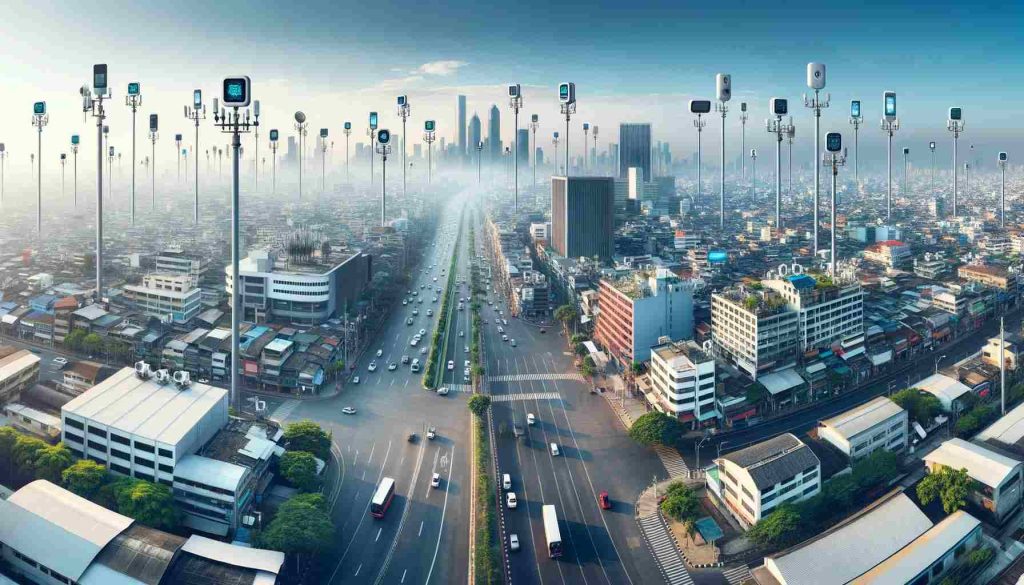
Real-Time Pollution Tracking: How Environmental Sensors are Changing Urban Management
Introduction
In the fight against urban pollution, technology plays a pivotal role, especially with the advent of advanced environmental and biometric sensors. These tools provide crucial data that enable cities to not only monitor but also manage environmental health more effectively. This article delves into how environmental sensors are being used for real-time pollution tracking and their transformative impact on urban management.
The Rise of Environmental and Biometric Sensors
Environmental and biometric sensors have become integral to modern urban ecosystems, offering precise data that help in various aspects from improving air and water quality to enhancing public health. These sensors detect and measure pollutants in the environment, such as particulate matter (PM2.5 and PM10), carbon monoxide, sulfur dioxide, and nitrogen oxides. The data collected is vital for city planners and public health officials to make informed decisions that safeguard the environment and public health.
Understanding Real-Time Pollution Tracking
Real-time pollution tracking involves the continuous monitoring of air and water quality using environmental sensors strategically placed throughout the city. These sensors provide data that is then analyzed to assess pollution levels, identify pollution sources, and understand how environmental factors affect pollutant dispersion and concentration.
This system allows for a dynamic response to pollution, where measures can be taken immediately to mitigate adverse effects. For instance, during instances of high air pollution, cities can temporarily reduce traffic flow or halt industrial activities to decrease the emission of pollutants into the atmosphere.
Technological Advancements in Sensor Technology
Recent technological advancements have significantly improved the capabilities of environmental sensors, making them more efficient and accessible. Innovations include miniaturization, enhanced sensor accuracy, and the integration of IoT (Internet of Things) for better connectivity and data management. These improvements facilitate the deployment of extensive sensor networks that cover larger areas and provide more detailed and reliable data.
Impact on Urban Management
The integration of environmental and biometric sensors into urban management systems has led to significant improvements in city planning and operations. Key impacts include:
- Enhanced Public Health Initiatives: By monitoring pollution levels, health authorities can issue warnings and take preventive measures to protect vulnerable populations, such as the elderly and children, from the harmful effects of pollution.
- Data-Driven Policy Making: The detailed data provided by these sensors enables policymakers to craft regulations that specifically target the sources and factors contributing to pollution. This data-driven approach ensures that policies are not only reactive but also proactive in preventing pollution.
- Improved Traffic Management: Environmental sensors can help manage urban traffic flows based on real-time air quality data. This can involve activating alternate day travel, encouraging public transport use, or rerouting traffic away from congested and polluted areas.
- Community Awareness and Engagement: Real-time data can be made accessible to the public through various platforms, increasing community awareness about pollution levels. This transparency helps to cultivate a more environmentally conscious mindset among citizens, encouraging them to contribute to pollution reduction efforts.
Challenges and Considerations
Despite their benefits, the deployment of environmental and biometric sensors in urban areas comes with challenges. These include the high cost of setting up and maintaining sensor networks, concerns over data privacy, especially with biometric sensors, and the need for technical expertise to interpret and act on sensor data. Additionally, there is the risk of data overload where the sheer volume of information available can be overwhelming to manage and analyze effectively.
Future Prospects
Looking ahead, the role of environmental and biometric sensors in urban management is set to expand. Future developments might include more advanced biometric sensors that can track public health parameters in real-time, predictive analytics for pollution management, and more robust AI systems to automate and optimize responses to environmental data.
Conclusion
Environmental and biometric sensors represent a paradigm shift in how cities handle pollution and manage urban environments. By harnessing the power of real-time data, these tools offer a proactive pathway towards sustainable urban development. As technology progresses, the potential of these sensors will continue to unfold, paving the way for smarter, healthier, and more resilient cities.
This exploration highlights not only the current capabilities of environmental sensors in managing urban pollution but also points towards a future where technology and environmental stewardship go hand in hand in creating livable, sustainable urban spaces.
Read Dive is a leading technology blog focusing on different domains like Blockchain, AI, Chatbot, Fintech, Health Tech, Software Development and Testing. For guest blogging, please feel free to contact at readdive@gmail.com.
